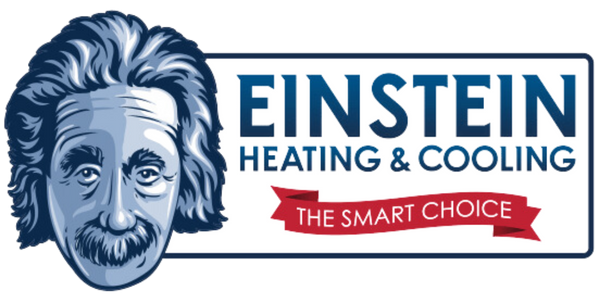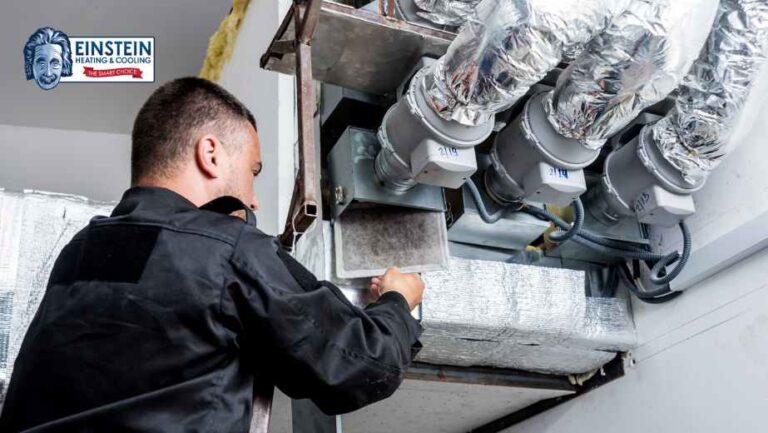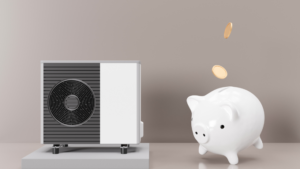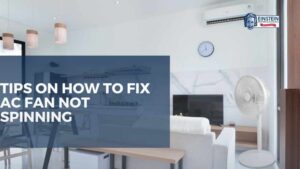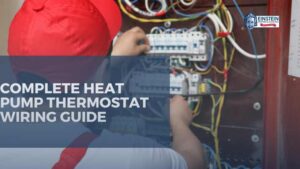When the HVAC system in your Bend, Oregon home fails and you’re left without heat, it can be a frustrating and uncomfortable situation, especially during the cold winter months. In such emergencies, it’s crucial to have a plan in place to keep your living space warm and safe. This article explores various emergency heating solutions for when you’re looking up “HVAC heat not working.” We will discuss these solutions in detail, providing you with the knowledge you need to stay warm and comfortable when facing such a predicament.
Factors to consider why is your HVAC heat not working
- Check the thermostat
- When your HVAC system stops heating, the first step is to inspect your thermostat. Ensure it is set to the “heat” mode and that the temperature setting is at the desired level. Sometimes, a simple adjustment can resolve the issue. If the thermostat’s screen is blank or unresponsive, it may be a power issue or a dead battery.
- Check the power
- If your thermostat appears to be functioning correctly, check the HVAC system for power issues. Examine the circuit breakers and fuses related to the heating system. A tripped circuit breaker or blown fuse may be responsible for the system’s failure. Reset the breaker or replace the fuse if needed. You may also check different parts of your unit to assess other common HVAC problems. If these checks don’t resolve the problem, it’s time to explore alternative heating options.
Emergency Heating Solutions
A. Emergency Space Heaters
- Electric Space Heaters: Electric space heaters are versatile and easy to use. They come in various sizes and designs, including ceramic and oil-filled models. When using electric space heaters, ensure they are on a level, stable surface, and never place them near flammable materials like curtains or paper. Keep a safe distance from the heater to prevent burns or fires. Always use models with safety features like tip-over and overheat protection.
- Gas Space Heaters: Gas space heaters, which are typically fueled by natural gas or propane, can provide powerful and efficient heating. However, they require proper ventilation to release combustion byproducts, including carbon monoxide. Never use outdoor gas heaters indoors, as they lack the necessary safety features for indoor use. If you use a gas space heater, ensure your home has carbon monoxide detectors to monitor air quality.
Advantages:
- Convenience: Electric space heaters are easy to use, portable, and can be placed in any room where heat is needed. Gas space heaters are also convenient and can provide a lot of warmth quickly.
- Instant Warmth: Space heaters, whether electric or gas, provide almost instant warmth, making them a quick solution for heating a specific area.
Disadvantages:
- High Electricity Consumption: Electric space heaters can be energy-intensive, leading to higher electricity bills if used extensively.
- Safety Concerns: Both electric and gas space heaters pose safety risks. Electric heaters can overheat or cause electrical fires if used improperly, while gas heaters can emit carbon monoxide if not well-ventilated.
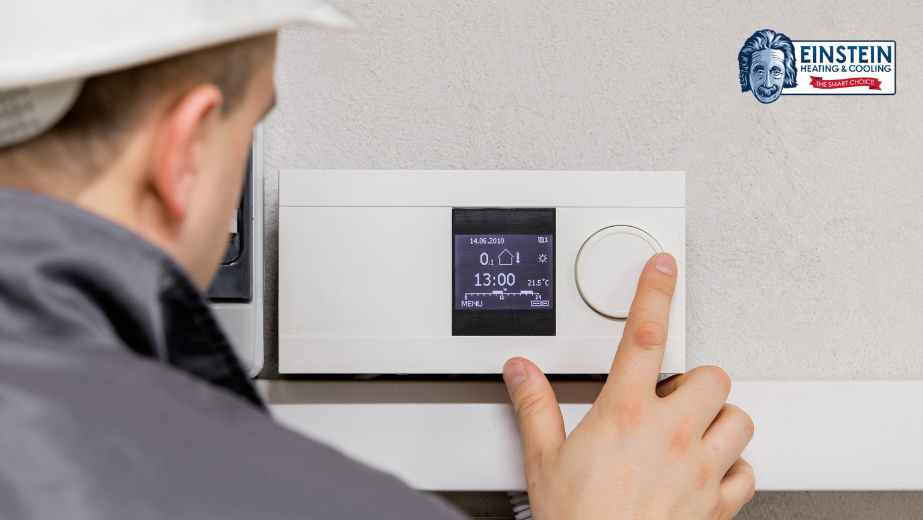
B. Portable Radiant Heaters
- Radiant Heaters: Radiant heaters use infrared radiation to directly heat objects and people within their reach. They are energy-efficient and can quickly warm a room. Be cautious when using radiant heaters, as they can become hot to the touch. It’s essential to keep them away from flammable materials, pets, and children to avoid accidents and burns.
- Oil-Filled Radiators: Oil-filled radiators are a safe choice for supplemental heating. These heaters are silent and don’t require a constant power source, making them ideal for power outages. They work by heating the oil within and then radiating heat into the room. Position them away from walls and furniture to ensure proper airflow and heat distribution.
Advantages:
- Efficient Heating: Radiant heaters provide efficient heating by directly warming objects and people, reducing heat loss to the surrounding air.
- Quiet Operation: These heaters operate silently, making them suitable for bedrooms and quiet environments.
Disadvantages:
- Limited Range: Radiant heaters have a limited range and are most effective when you are in close proximity to them. They may not be sufficient for heating larger spaces.
- Safety Precautions: They can become hot to the touch, posing a burn risk, especially in households with children or pets.
C. Fireplace or Wood-Burning Stove
- Wood-Burning Stove: If you have a wood-burning stove or a fireplace, you have a valuable source of emergency heat. Ensure your stove or fireplace is clean and well-maintained to prevent creosote buildup, which can be a fire hazard. Stockpile enough wood or fuel to last through the emergency, and keep a set of fireplace tools nearby for safety.
- Safety Precautions: When using open flames for heat, always follow safety precautions. Install carbon monoxide detectors in your home to monitor gas levels. Adequate ventilation is essential to prevent the buildup of dangerous gas like carbon monoxide. Additionally, consider using a fire screen to contain sparks and embers and minimize the risk of accidents.
Advantages:
- Ambiance: A wood-burning stove or fireplace adds ambiance to your home while providing heat.
- Independence from Utilities: You are not reliant on electricity or gas to keep warm when using a wood-burning stove or fireplace.
Disadvantages:
- Safety Hazards: Fireplaces and wood-burning stoves require careful operation to prevent fires and carbon monoxide buildup. Regular maintenance is crucial.
- Environmental Impact: Burning wood can contribute to air pollution, and the use of non-seasoned or treated wood can release harmful chemicals.
D. Emergency Blankets and Sleeping Bags
- Insulation and Layering: In situations where your primary heating source is unavailable, emergency blankets or sleeping bags can be invaluable for conserving heat. Emergency blankets, often made of Mylar, are designed to reflect and retain body heat. Sleeping bags are insulated for warmth and can be especially useful when sleeping in a cold room or during power outages.
- Stay in One Room: In order to maximize the effectiveness of your heating source and conserve energy, it’s advisable to focus on heating one room. This minimizes heat loss and helps maintain a comfortable temperature in that area.
Advantages:
- Portability: Emergency blankets and sleeping bags are highly portable and can be moved to where heat is needed.
- Efficiency: They are effective at retaining body heat, helping to maintain warmth without the need for external heating sources.
Disadvantages:
- Limited Comfort: These options are not as comfortable as conventional bedding, so extended use may lead to discomfort and disrupted sleep.
- Single-Use: Emergency blankets are typically single-use items and may need to be replaced after use.
E. Warm Clothing and Blankets
- Layering: Layering your clothing is a highly effective way to retain body heat. Start with a moisture-wicking base layer to keep sweat away from your body, add an insulating layer for warmth, and finish with a warm, comfortable outer layer. Wool and fleece are excellent choices for insulating layers. Don’t forget to wear warm socks, gloves, and a hat indoors to prevent heat loss from extremities.
- Thick Blankets: Thick, insulating blankets can significantly improve your comfort and warmth. Blankets made of materials like down or fleece provide exceptional insulation. Wrapping yourself in these cozy blankets is a great way to stay warm while minimizing the need for additional heating.
Advantages:
- Cost-Effective: Using warm clothing and blankets is a cost-effective way to stay warm during an HVAC emergency.
- Sustainability: This approach reduces energy consumption and environmental impact.
Disadvantages:
- Limited Range: It only keeps individuals warm, not entire rooms.
- Not Suitable for Prolonged Use: While effective for short periods, wearing heavy clothing and blankets all day and night can become uncomfortable.
F. Hot Water Bottles and Heating Pads
- Hot Water Bottles: Filling a hot water bottle with warm (not boiling) water provides localized heat. Place it in your bed or on your lap to stay warm and comfortable. It’s an effective and eco-friendly way to maintain warmth without electricity.
- Heating Pads: Electric heating pads are a convenient option for targeted warmth. Always use them according to the manufacturer’s instructions, and choose models with an automatic shut-off feature for added safety. Heating pads are especially useful for addressing specific areas of discomfort or cold.
Advantages:
- Localized Heat: Hot water bottles and heating pads provide targeted warmth, which can be soothing for specific areas of the body.
- Energy-Efficient: They are energy-efficient and require minimal resources.
Disadvantages:
- Limited Coverage: These methods are best for personal comfort but don’t effectively warm a room.
- Risk of Burns: Overheating or using hot water bottles improperly can lead to burns
G. Seal Drafts and Insulate
- Draft Sealing: To keep your home warm, inspect your doors and windows for gaps, and use weather stripping or caulk to seal them. Draft stoppers placed along the bottom of doors can also prevent cold air from entering. Regularly check and maintain these seals, as they can wear out over time.
- Window Insulation Film: Window insulation film is a cost-effective way to improve your home’s energy efficiency. Applying this transparent film to your windows creates an additional layer of insulation that helps maintain a comfortable indoor temperature. Make sure to follow the installation instructions carefully for the best results.
Advantages:
- Energy Efficiency: Sealing drafts and insulating your home not only keeps you warm but also lowers energy bills.
- Year-Round Benefits: Improved insulation benefits your home’s comfort and energy efficiency throughout the year.
Disadvantages:
- Initial Cost: Weatherproofing your home may involve an initial cost for materials and installation.
- Maintenance: Seals and insulation may require periodic maintenance to remain effective.
H. Use Thermal Curtains
- Thermal Curtains: Thermal curtains are designed with insulating properties to trap heat and block drafts. They are an effective and relatively affordable way to improve the energy efficiency of your windows. Choose curtains with multiple layers or thermal linings to maximize their insulation capabilities.
Advantages:
- Enhanced Insulation: Thermal curtains are effective at trapping heat, reducing heat loss through windows.
- Energy Savings: They can lower energy bills by decreasing the need for heating in the winter and cooling in the summer.
Disadvantages:
- Cost: High-quality thermal curtains can be relatively expensive.
- Aesthetics: Some people may not find thermal curtains as aesthetically pleasing as regular curtains.
I. Candles and Lanterns
- Candles: Candles provide not only a source of light but also a modest amount of heat. While they may not heat a room as effectively as other methods, they can contribute to a slight increase in temperature. When using candles for heat, always place them in sturdy, non-flammable candle holders and never leave them unattended.
- Battery-Powered Lanterns: Battery-powered lanterns are a safer alternative to candles. They provide light and a minimal amount of heat. These lanterns are a suitable choice for those who are concerned about open flames and potential fire hazards. They are also more versatile and can be used in various rooms throughout your home.
Advantages:
- Light and Heat Source: Candles and lanterns serve a dual purpose, providing both light and some heat.
- Cost-Effective: Candles and battery-powered lanterns are generally affordable.
Disadvantages:
- Limited Heat: They offer relatively low heat output and are best suited for personal use rather than room heating.
- Fire Risk: Candles pose a fire hazard, especially in homes with flammable materials or curious pets and children. Open flames must be used with caution.
J. Cooking for Heat
- Gas Stove: If you have a gas stove, it can serve as a source of both heat and food preparation. A lit gas burner emits heat and can help warm the kitchen area. However, always exercise caution when using open flames indoors and ensure proper ventilation to prevent the buildup of gas
- Oven Heat: Your oven can also be used for heating and cooking. It’s an effective way to warm your kitchen and adjacent areas. Keeping the oven door closed traps the heat inside, helping to maintain a more comfortable indoor temperature. Be sure to monitor the oven while it’s on and never leave it unattended.
Advantages:
- Multi-Purpose: Using your gas stove or oven not only provides heat but also allows you to cook meals.
- Localized Heat: The heat generated is immediate and localized to the kitchen area.
Disadvantages:
- Energy Consumption: Cooking for heat can consume a significant amount of energy and potentially increase your energy bills.
- Ventilation: Adequate ventilation is necessary to prevent the buildup of cooking byproducts, such as moisture and odors, which can affect indoor air quality.
K. Community Resources
- Emergency Shelters: In severe cases where your home’s heating system is non-functional and the weather is extreme, it may be necessary to seek shelter in an emergency facility or with friends or family in Bend, Oregon who have a working HVAC system. Many communities have established emergency shelters and services to assist individuals and families during extreme weather conditions.
- Local Services: Inquire with local authorities or community organizations for assistance during a heating emergency. Some regions offer emergency heating assistance or temporary shelter options for those without a working HVAC system. Such services can provide a safe haven during challenging times.
Preventive maintenance for your HVAC heat not working
Performing regular maintenance is important to avoid future HVAC emergencies.
- Regular HVAC Maintenance: These checks include cleaning, inspecting, and servicing the system to ensure it operates efficiently and reliably. Professional technicians in Bend can identify and address potential issues before they result in a breakdown.
- Emergency Heat Sources Maintenance: If you have alternative heat sources, such as space heaters or wood-burning stoves, it’s equally important to maintain them properly. Keep them clean, check for any defects, and ensure they are in good working order. Regular maintenance ensures that these sources are ready to provide heat when needed.
Seek Professional HVAC Repair
Don’t Attempt DIY Repairs for serious concerns as this can damage your hvac heat.
- Contact professionals: If you’re unable to identify and fix the issue with your HVAC system, it’s essential to seek professional help from certified technicians. You may also get in touch with professionals and ask them about preventive maintenance plans for your HVAC unit. Attempting DIY repairs on complex heating systems can be dangerous, and you may inadvertently worsen the problem or void warranties. Licensed, experienced, and skilled technicians from Einstein Heating and Cooling can diagnose and repair the issue correctly, restoring your heating system’s functionality in a safe and efficient manner.
In Conclusion
In situations where your HVAC heat is not working, being prepared and knowing how to utilize alternative heating solutions is essential for maintaining a comfortable and safe living environment. The expanded information provided in this article covers a wide range of options, from electric and gas space heaters to insulating techniques, layering clothing, and using thermal curtains. When damage is too extreme on hvac heat not working, Einstein Heating and Cooling is the premier choice for clients in need of HVAC repair services. We show you our unparalleled expertise, commitment to excellence, and unwavering dedication to customer satisfaction.
